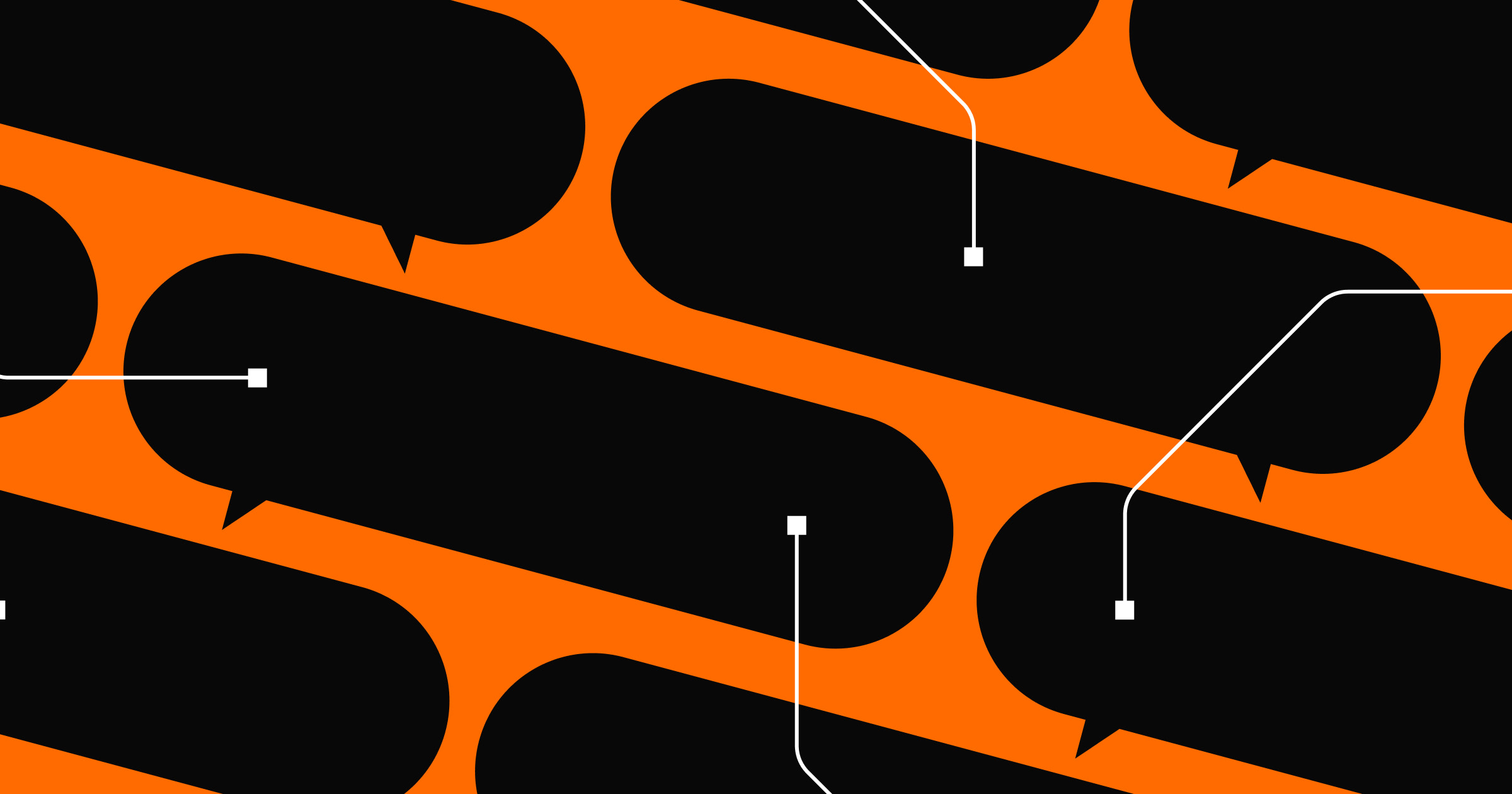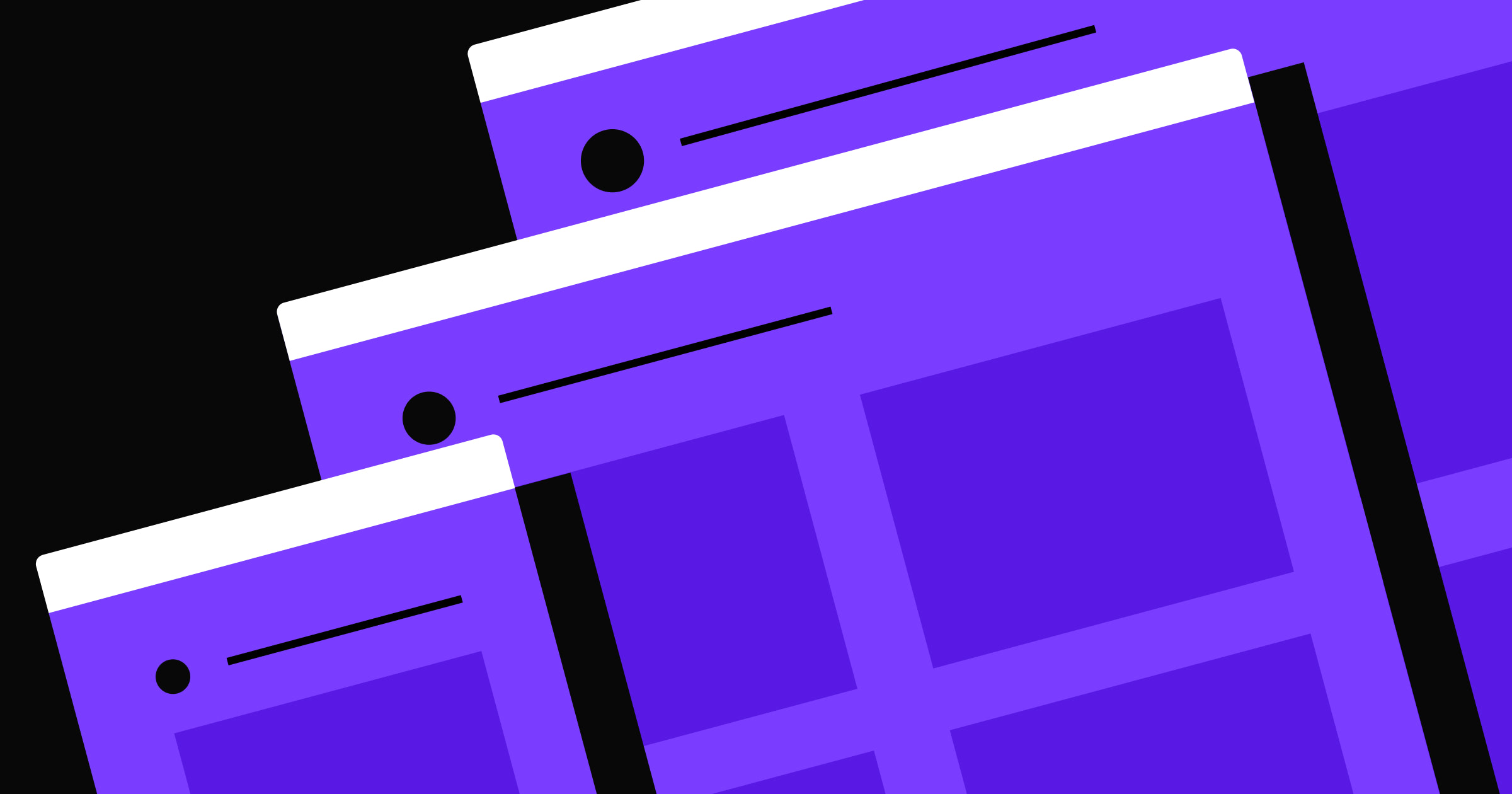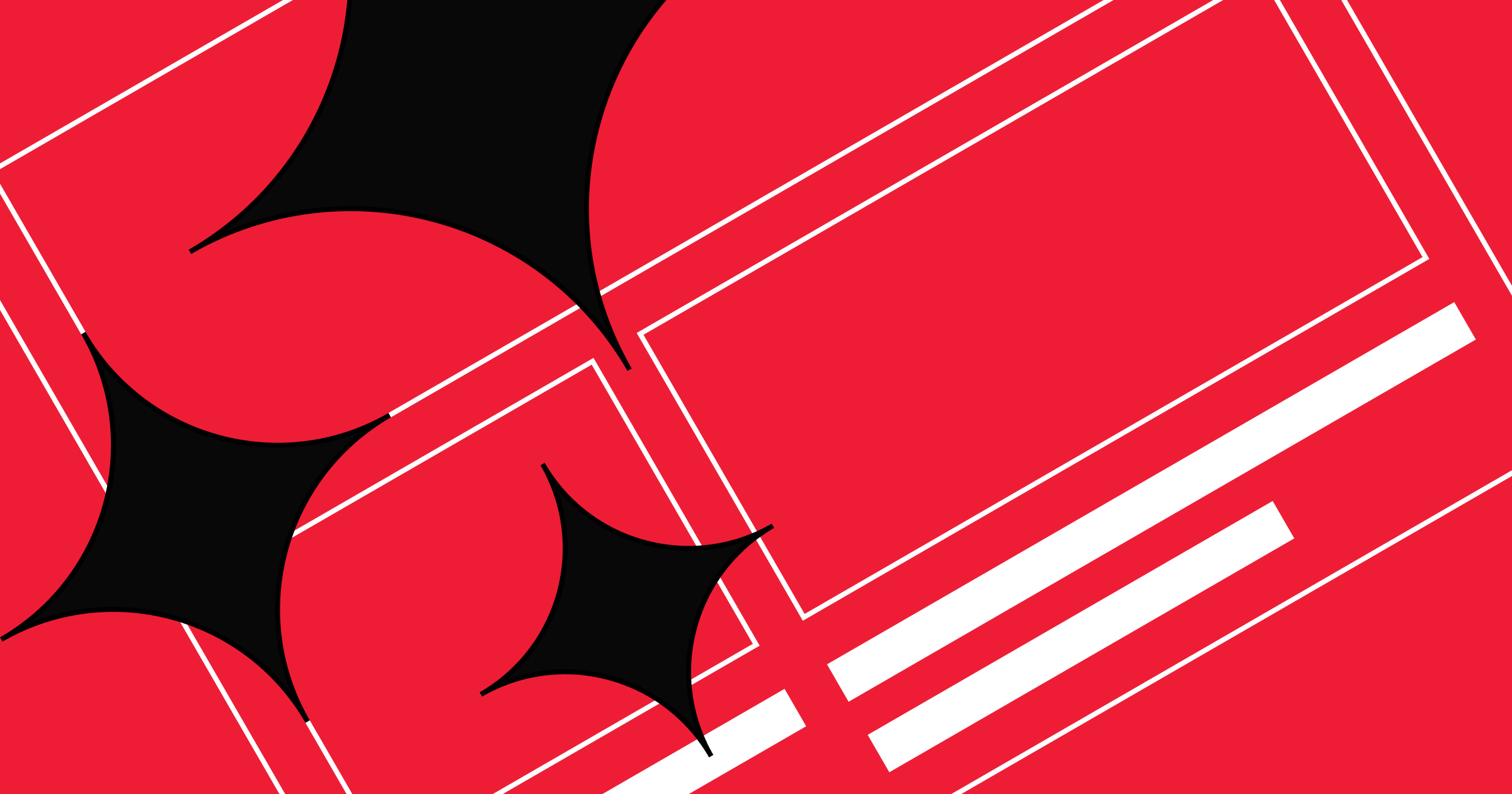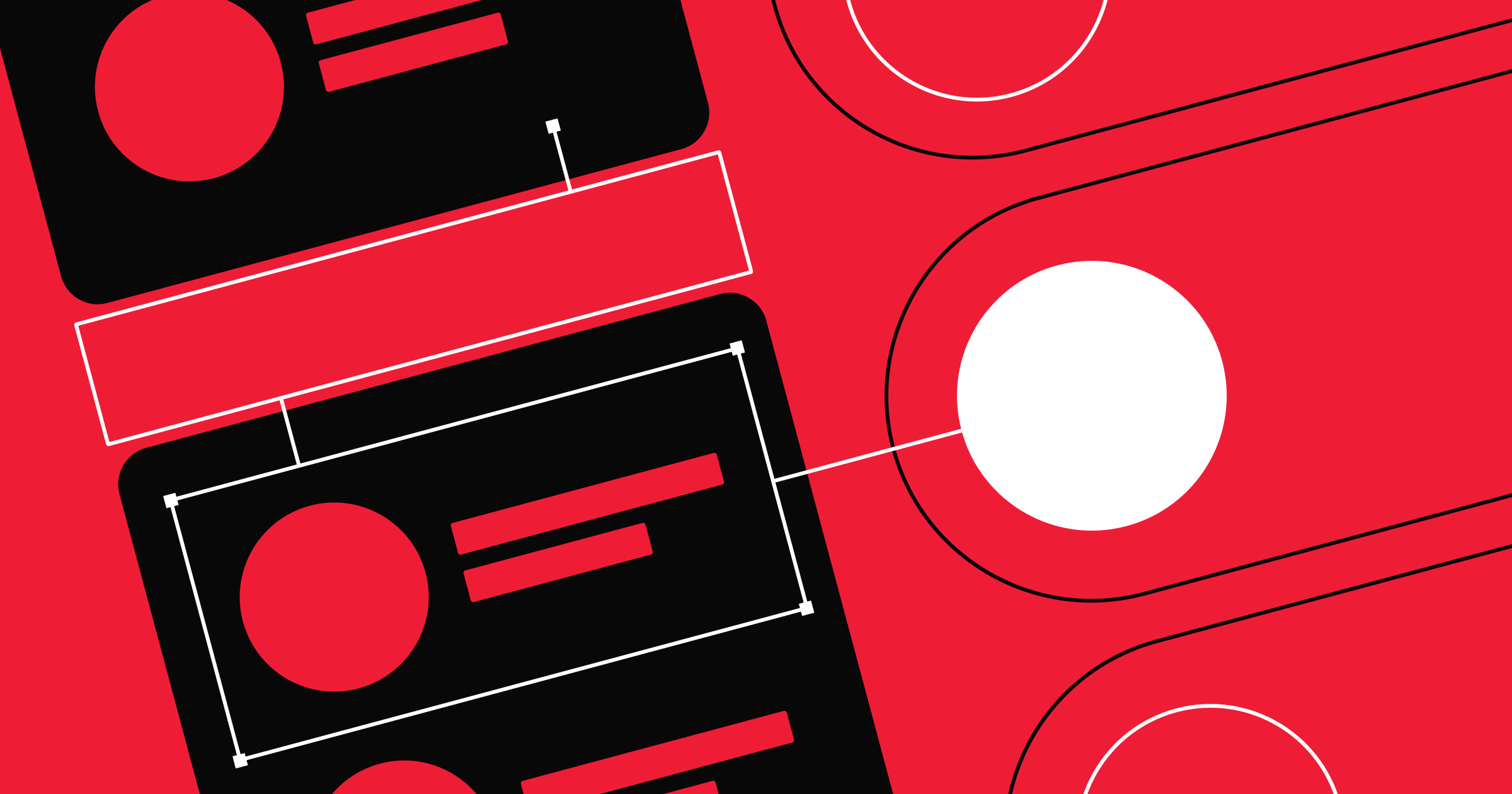FAQ pages get ahead of questions and free up your support team.
An FAQ page is a dedicated website section that answers common questions about products and policies. By anticipating and addressing common questions your audience might ask, you can create an FAQ page that frees up time for both customers and support teams.
Read on to learn best practices for creating the most effective FAQ pages.
What is an FAQ page?
An FAQ page is a dedicated section of a website that answers common questions about your products, services, or brand for visitors.
Why FAQ pages matter
FAQ pages help visitors find quick answers, reduce the load on your support team, and build trust by proactively addressing concerns. They're also a great way to increase keyword visibility and capture traffic from search engines.
As of 2025, having an FAQ page optimized for quick navigation and relevant content is crucial for keeping your site user-friendly in a rapidly evolving digital landscape.
How to make an FAQ page
Designing an effective FAQ page for your client's website requires research and maintenance. Here's a guide to get started.
1. Identify the most frequently asked questions
Collect data from customer interactions, support tickets, and feedback forms to find the questions your target audience often asks. Use SEO tools and conduct keyword research to identify common queries. A data-driven, SEO-backed approach helps pinpoint visitors' needs while improving the page's visibility in search engines.
2. Determine the structure/layout
After compiling questions, decide how to organize them. Group related questions into categories to allow people to navigate the page more quickly. Consider whether a searchable FAQ, collapsible accordion menus, or a simple list format best serves your client's audience and the site's content.
3. Provide live support options
While an FAQ section answers many common questions, there'll be times when customers need more help. Within the page, include options for live support, such as a chatbot, contact form, or a direct link to your client's customer service team. Visitors can conveniently reach out for additional assistance without rummaging through multiple pages or sections.
4. Design the FAQ page
Design the website's FAQ section to be visually appealing and user-friendly. Opt for clear headings, legible fonts, and consistent formatting. For example, you could add a sticky menu and incorporate icons to improve navigation and make the page more engaging.
Align the typeface, colors, and branding with your brand or client's style guide so it's consistent with other cross-platform marketing materials.
5. Regularly update the content
An FAQ page isn't a set-it-and-forget-it resource. Regularly review and update the content to reflect new questions, changes in products and services, and evolving customer needs. Regular review keeps your client's FAQ section accurate and relevant over time.
FAQ page design best practices
Follow these best practices to design valuable, approachable FAQ pages for any business.
- Choose an FAQ template that matches your brand's look and feel.
- Pick an FAQ template with user-friendly customization options.
Categorize questions for better organization
Group related questions into categories to avoid overwhelming visitors with a long list of questions. For example, dedicated sections like "Shipping & Returns," "Product Information," and "Account Management" make navigation more convenient. Consider using color-coded tabs or icons for each category to visually distinguish them.
Highlight the most common questions
Make the most popular questions prominent on your client's FAQ page. Create a "Top Questions" section at the top or use a "Most Popular" badge to draw attention to these key queries.
You can also display common issues dynamically, based on the visitor's browsing behavior, showing them what other people frequently ask about the same products and services.
Keep the design simple
A clean, minimalistic design helps people focus on the content. Use ample whitespace, legible typography, and consistent styling throughout the page.
Avoid overloading the FAQ section with too many elements. Instead, rely on direct navigation tools that help visitors find information fast, keeping the page visually tidy and user-friendly.
Write clearly and concisely
Avoid jargon and focus on delivering straightforward solutions. Clear, direct answers provide information in the shortest time, so people can continue browsing.
You can use microcopy — short, helpful text snippets — to clarify technical terms or provide additional context where needed. The text can include isolated tips and simple pop-ups that keep the main content concise, while offering detailed help as needed.
Add a search bar for quick navigation
A search bar lets visitors find the specific information they're looking for more quickly. You can make search functionality even more effective by adding an auto-suggest feature that displays possible matches as the user types, guiding them to the correct answers more quickly. Also, consider tracking search queries to find gaps in your client's FAQ content and add new sections when necessary.
Ask for feedback
Invite customer feedback on whether the answers were helpful. A thumbs-up or thumbs-down option, or a prompt like "Was this answer helpful?," tells you how well your client's FAQ page serves its audience. Apply this input and improve the FAQ content to address visitors' needs.



















Get our 100 video course on web design — for free
From the fundamentals to advanced topics — learn how to build sites in Webflow and become the designer you always wanted to be.
6 examples of effective FAQ pages
If you're researching FAQ templates, these real-world examples offer plenty of inspiration for quick setup and customization.
You can design visually appealing and functional FAQ pages for any kind of website. Here are six examples to inspire your next project.
1. Real Estate Social Media App
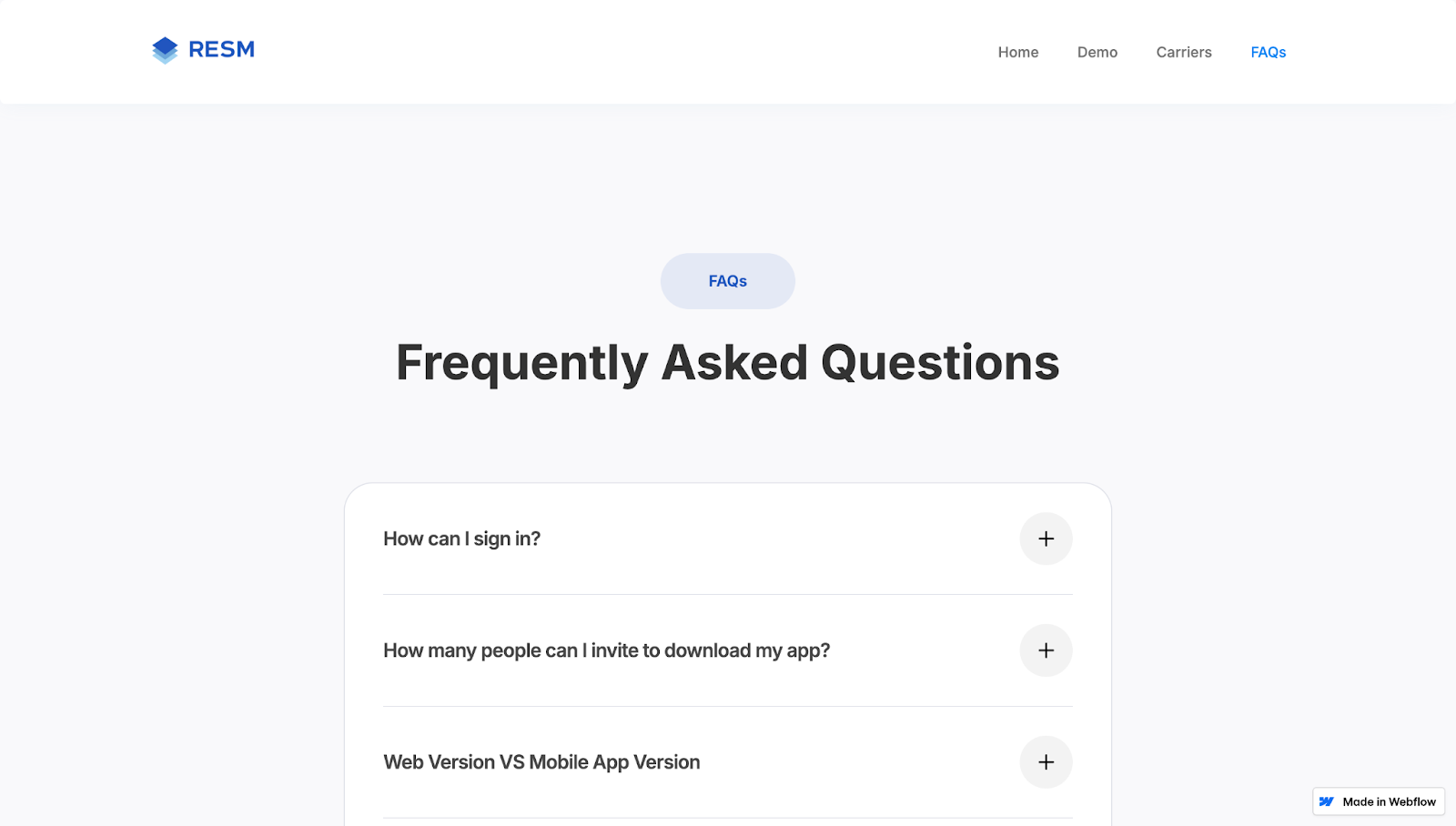
The Real Estate Social Media App website, designed by Golden Medina Services, has a minimal design with an accordion-style layout. The blue, white, and gray branding is consistent with the rest of the website, reinforcing the company’s visual identity.
A prominent plus (+) icon makes interaction intuitive, telling visitors that the question expands when clicked. Detailed responses for each question also provide sufficient information, reducing the amount of additional support visitors need.
2. PrivateAir
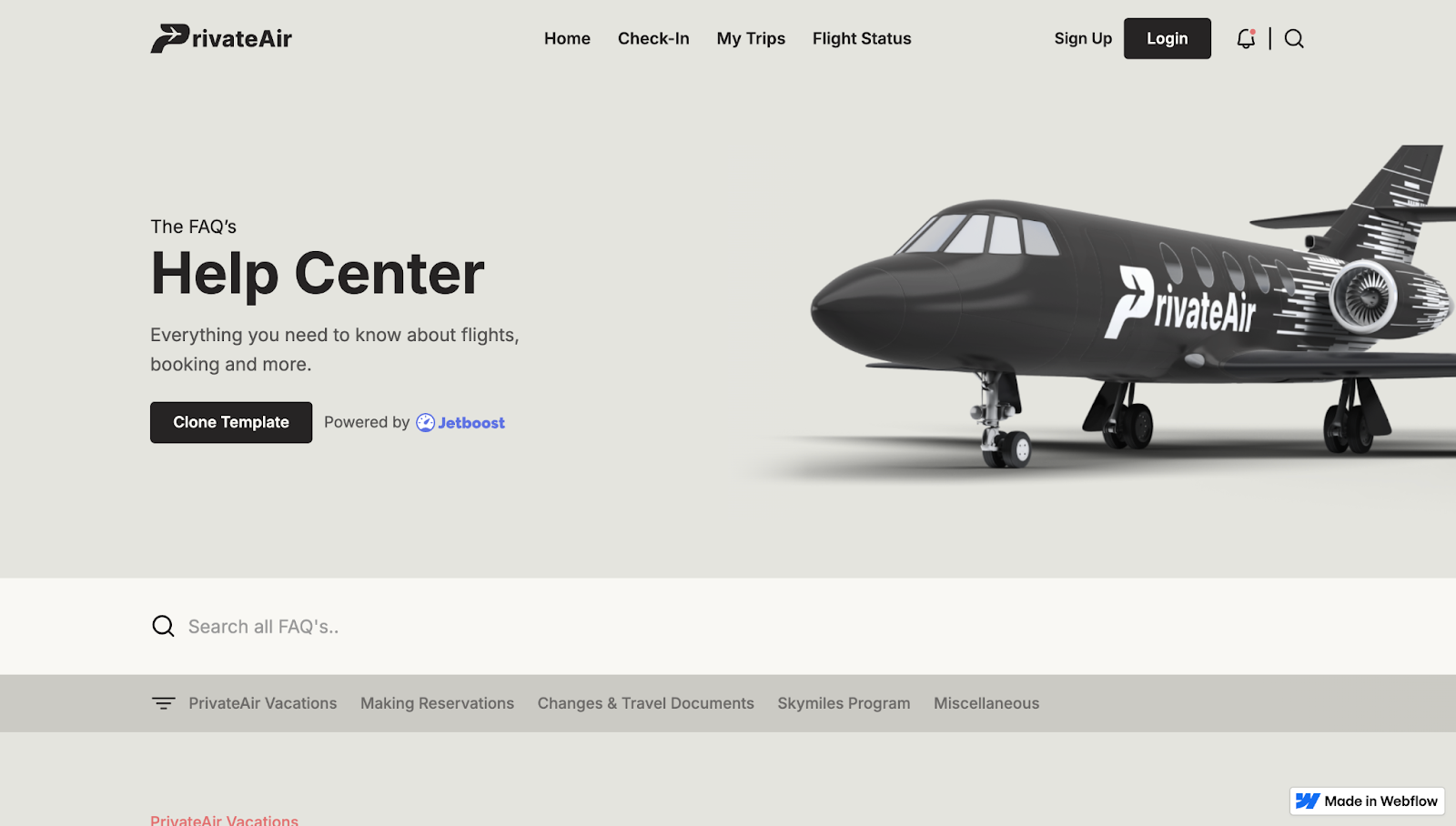
The PrivateAir website’s FAQ page, by Jetboost, has a prominent "Help Center" heading with a blurb underneath that immediately tells you this is the go-to page for “everything you need to know about flights, bookings and more.” Categories like “PrivateAir Vacations” and “Making Reservations” are at the top, so you can quickly navigate to a topic. Plus, there’s a “Search all FAQs” bar in case you can't find the exact keyword or term in the menu.
Hovering over any question darkens it with a subtle animation, offering instant response so you know which question you're currently on. This cloneable FAQ template’s muted color palette also keeps the focus on the questions. And toward the bottom, related resources like "Travel Requirements Guide" and "Feedback & Complaints" offer additional support.
3. Space Business Centres
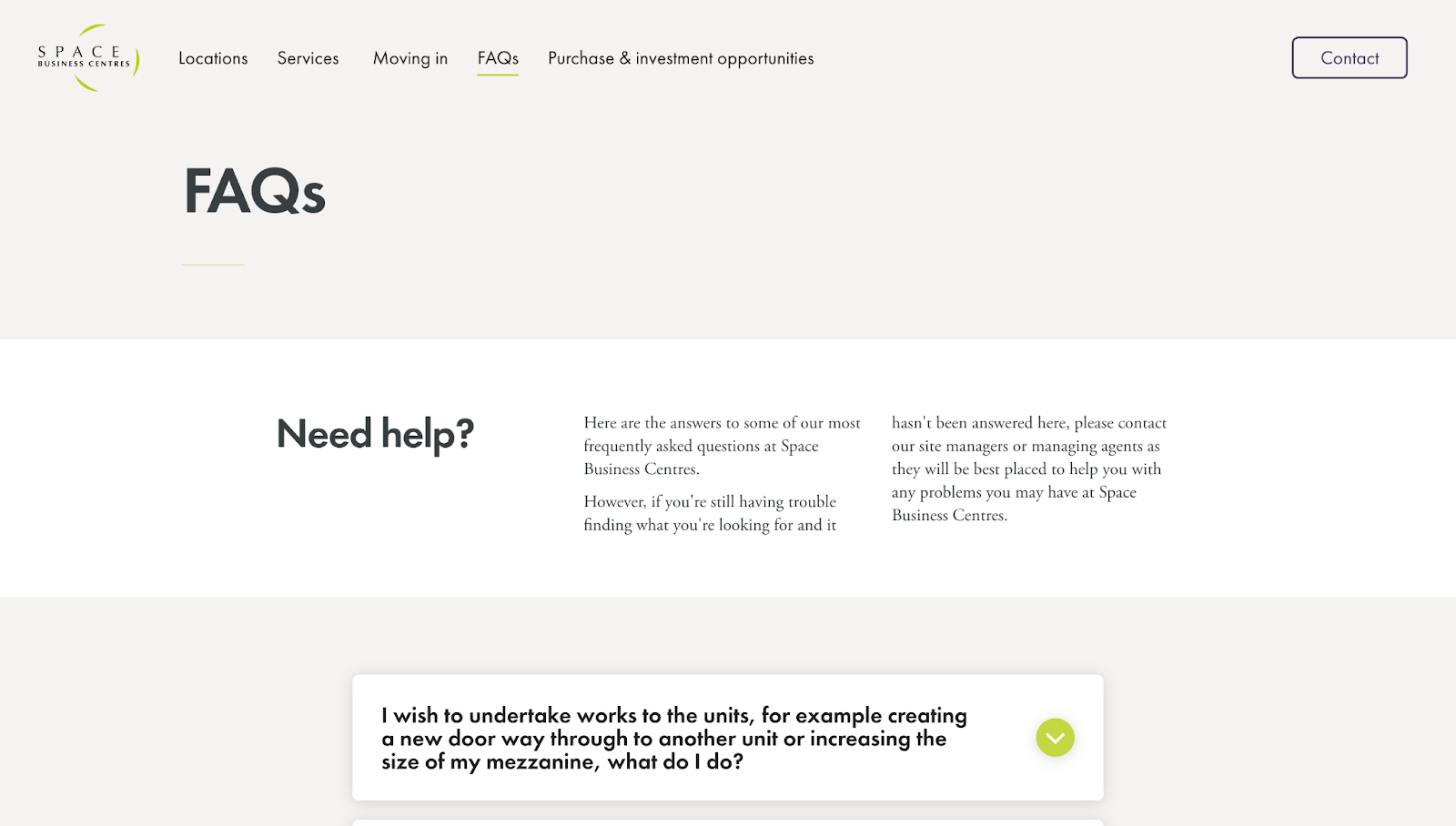
An accordion-style layout organizes the questions neatly while displaying all at a glance. Bright green down arrows offer visual cues to expand each query for more details. And specific action prompts within the answers, like the "Alterations request form" or “Temporary skip license” buttons, let you take the next step directly from the FAQ page, cutting down on required actions.
4. The Excel VBA Handbook
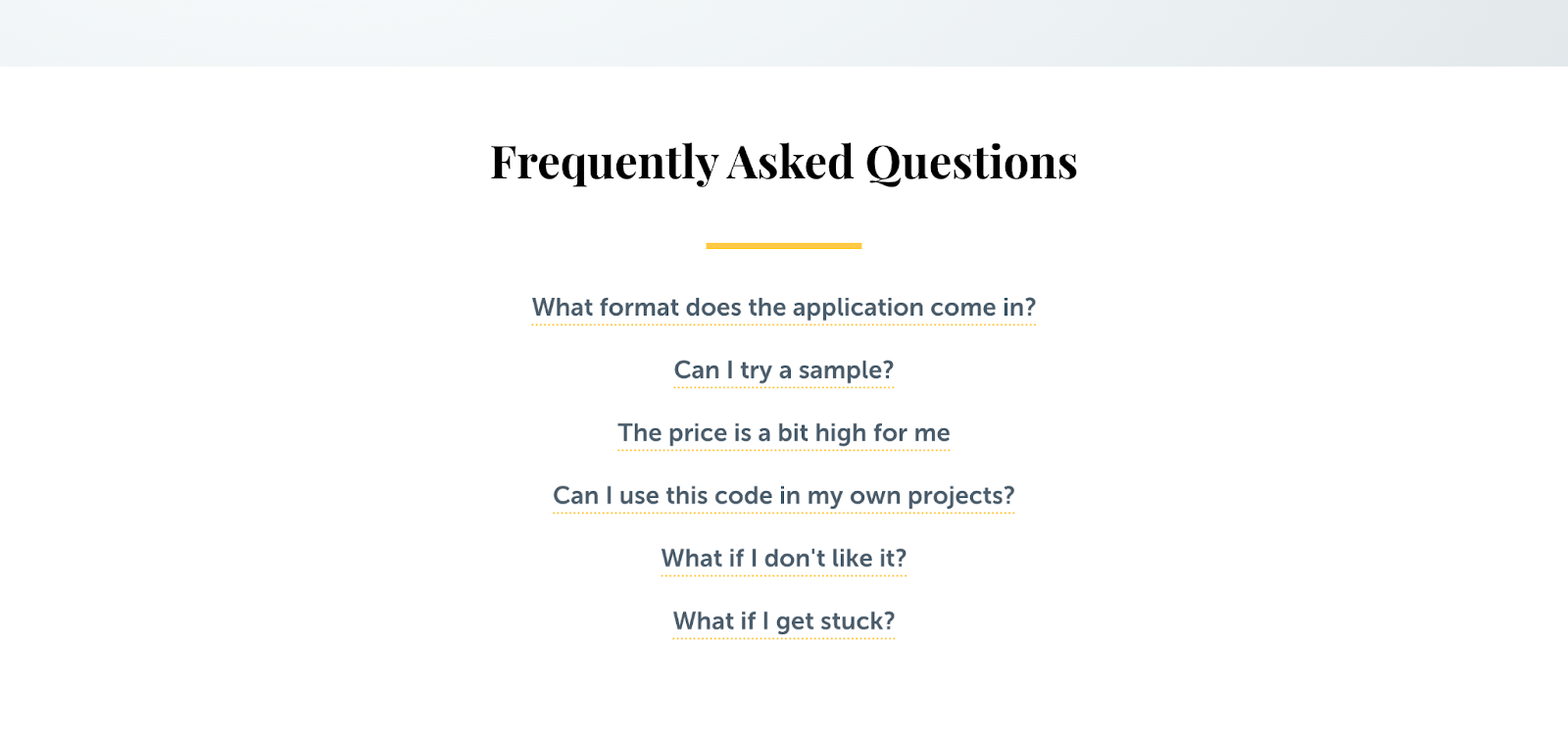
The Excel VBA Handbook website, designed by Dmitry Kravchenko, caters to a specific audience: Microsoft Excel users who want to create VBA applications to automate tasks and functions. The FAQ page has clear answers that address common concerns customers might raise, such as “What format does the application come in?” and “Can I try a sample?” Each answer is highlighted in a box, drawing attention to the text and making it stand out from the surrounding content.
An additional section, "How do I know if this is right for me?," qualifies leads by helping readers identify whether the product suits their needs. And a follow-up section, "Who this is not for," adds valuable transparency to cut down on returns and buyer dissatisfaction.
5. HatchBridge Incubator

The HatchBridge Incubator FAQ page, created by the company’s in-house team, has a clear and informative header of “Find answers to frequently asked questions” and a highly navigable accordion layout for the questions.
What sets this FAQ example apart is the prominent yellow box with contact information, letting people easily reach out if the site doesn't answer their questions. The box contains an email address and a phone number, making HatchBridge's support readily available.
6. CMS FAQ

The CMS FAQ website template, made by Ali Saeed, has a highly visible header that says, “You’ve got Questions. We’ve got Answers.” This immediately instills confidence in visitors.
Below, a search bar lets you quickly enter specific keywords to find what you’re looking for. There are also several categories with icons for visual aid, followed by a list of questions grouped in those categories.
Clicking on a question takes you to a dedicated answer page. If you can’t find a suitable solution, a “Still have questions” section at the bottom has contact information, including working hours, an email, and a phone number.
If you plan to build a similar page, remember that Webflow's Template Marketplace offers many options to get your FAQ section online fast.
As you've seen in these examples, an effective FAQ page can significantly help users find the answers they need.
Leave no questions unanswered
A well-structured FAQ page can reduce the load on your support team by offering quick access to the information visitors need. It's a satisfying and supportive experience. By following the best practices mentioned above, you can create FAQ pages that solve issues and improve your client's credibility.
Webflow offers a visual design environment for creating websites and dedicated FAQ pages without relying on developers. Build your FAQ page with Webflow's flexible faq templates and a visual web development platform for a seamless launch.
For deeper details beyond an FAQ page, consider building a full knowledge base that'll address more in-depth questions.
As 2025 continues, more audiences expect fast, accurate information from brands, so make sure you keep your FAQ page updates on a regular schedule.

Build websites that get results.
Build visually, publish instantly, and scale safely and quickly — without writing a line of code. All with Webflow's website experience platform.


